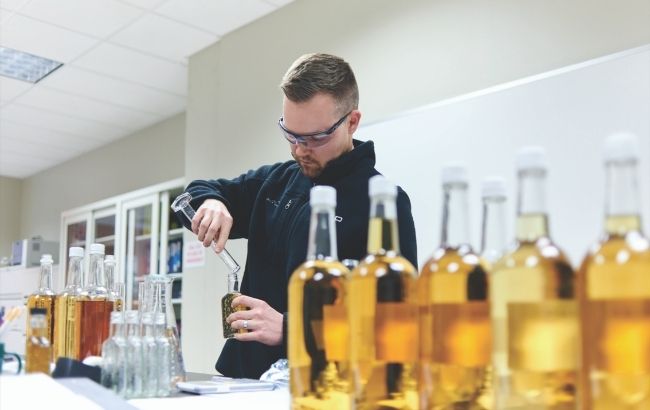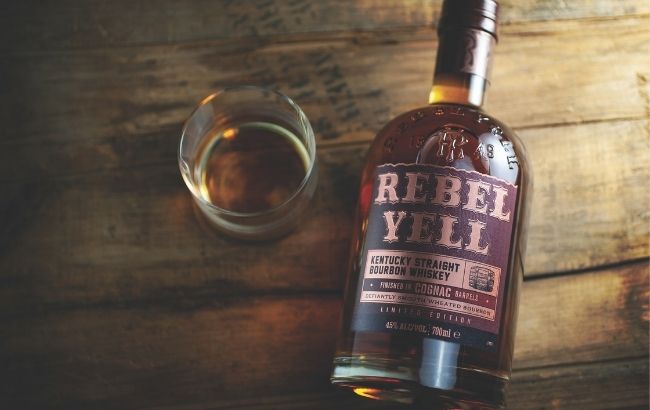The third-party distillers launching their own labels
While big third-party producers have been a major part of the industry for years and are still going strong, change is afoot with own-label bottlings on the rise, as Owen Bellwood discovers.

Craft and artisanal spirits remain the apple of many consumers’ eyes, with drinkers often seeking out products with provenance, history and a handmade approach to distillation. However, the backbone of many start‐up brands touting these credentials has long been third‐party distillers. Producers such as MGP Ingredients have aided the launch of countless Bourbon brands, while London’s Thames Distillers has helped create myriad gins.
“Third‐party producers can be critically important to a fledgling brand,” says Dave Colo, president and CEO of MGP Ingredients. “These newer brands often need aged supply to sell to generate cash while their own product ages.”
The capital required to open a distillery or fund a well‐stocked cask programme can be a barrier to entry for those looking to launch products in the spirits sector. As such, third‐party production can offer an alternative route into the industry.
However, the knowledge and experience gained while contract‐distilling puts third‐party producers in a unique position if they decide to try their hand at brand creation.
Kentucky’s Green River Spirits Company has been producing third‐party spirits since 2016. But the distillery, which can trace its origins back to 1885, will this year expand its offering with a new whiskey of its own.
“It’s a showcase,” says CEO Simon Burch, about the impending release of Green River Whiskey. “It will be a very, very small part of our volume and portfolio. It will only be in the state of Kentucky, so it’s limited deliberately,” he says. “It’s a proof of concept, it’s proof that this is a great brand that has been revived, the liquid inside this bottle is second to none, and it’s a way of being able to celebrate the great history of the distillery, and the present quality of the liquid from Jacob Call [master distiller at Green River Spirits].”
Green River Whiskey will be the third‐party producer’s first foray into own‐label bottlings. For Burch and the team, it will demonstrate everything they can do at the Kentucky distillery, while also reviving the Green River Whiskey name that was last seen on bottles before Prohibition, which forced the brand out of business.
By having a flagship product such as this, Burch also hopes the whiskey will encourage the other third‐party brands distilled at the Green River site to highlight their origins and ties to the distillery in Owensboro, Kentucky.
Burch says: “The more successful that brand is, hopefully the more compelling it will be for brand owners to say ‘hey, our brand is from the Green River distilling company in Kentucky’. So we deliberately lean into that as an opportunity, not a problem.”

TIME TO DIVERSIFY
While Green River will use its products to highlight its capabilities, in recent years MGP Ingredients has sought to acquire brands that can help diversify its offering.
This year, MGP Ingredients agreed to acquire American whiskey maker Luxco in a deal valued at US$475 million. At the time, the agreement to buy the Missouri‐headquartered company was said to be in line with MGP’s strategy of moving into ‘higher valued‐added products’. The company also purchased American gin and whiskey maker New Columbia Distillers in March 2020 for an undisclosed sum. The company produces Green Hat Gin.
“Our long‐term strategy calls for increasing MGP’s presence in higher value‐added products, something both Luxco and the former New Columbia Distillers provide,” says Colo. “With Luxco, we acquired a comprehensive national sales footprint with an attractive portfolio of brands, supported by extensive operational capabilities.
“Acquiring New Columbia Distillers added the first premium gin to our branded portfolio, along with existing distillery operations in Washington DC.”
However, while both are now part of MGP’s portfolio, Colo says the producers will “maintain their distinctive brands and reputations for quality”.
With Luxco products such as American whiskey brands Ezra Brooks, Rebel Yell, Davies County and Yellowstone, as well as El Mayor Tequila and Everclear grain spirit now in the MGP portfolio, Colo says the diverse range of own‐label spirits his company offers will allow MGP to leverage its distilling capabilities and expertise to capture higher margins.
“Our portfolio is positioned in the high‐premium to super‐premium price categories,” he explains. “We look forward to rapidly expanding the portfolio geographically through the Luxco acquisition, and then scaling the brands as more consumers have the chance to sample our distilled spirits portfolio.”
CORE BUSINESS
While the growth of its own‐label bottlings is firmly on the cards for MGP, Colo says the company will always focus on its third‐party distilling commitments. He says: “Our core business is contract distilling, where we remain committed to providing exceptional spirits, whether the customer is multinational or a fledgling craft distiller. Regarding our own consumer brands, we’re still dedicated to providing sought‐after premium spirits and support for the retail and on‐premise markets. The acquisition of Luxco provides immediate scale and infrastructure to our branded spirits business, allowing us to participate more fully in that segment.”

For third‐party producers such as MGP Ingredients and Green River Spirits, launching own‐label products has offered myriad benefits. However, the UK’s Alcohol Solutions is instead looking to use the lessons learned while launching its own products to tackle the third‐party spirits sector.
“We produced our Three Rivers Gin at the City of Manchester distillery, and we had a very successful gin experience for the best part of five years,” says director Graham Gibson. “In 2019, we began to experience quite a bit of competition coming into Manchester on the gin experience. We hadn’t seen a downturn in our business, we were expecting it to take an impact, so we started to do some third‐party bottling. It was just for a few brands – a bit of bottling, a bit of liquid sourcing – and we started to do that in our distillery in central Manchester.”
After its third‐party production business began increasing, Alcohol Solutions opened a much larger site in Carrington, Manchester, last year. The new 13,000‐square‐foot production facility has the capacity to produce 10 million cans and bottles annually.
“Because we are already a distiller, we’ve got lots of experience, we’ve got a master distiller and head distillers on site – we can relate to those customers that want craft credentials,” says Gibson. “So, we can take a product from being a little craft spirit in your kitchen through to a distillery, through to manufacturing thousands of litres. We have been through that journey ourselves.”
LOFTY AMBITIONS
With 45 clients on the company’s roster already, Gibson and the team at Alcohol Solutions have lofty ambitions for the third‐party distilling arm. These aims aren’t limited to gin either, with the new site capable of developing rums, hard seltzers and other spirits categories too.
Gibson adds: “We needed to have a site that is able to do more than just one category, so we have the capability to do most alcohol styles.”
With a diverse offering now available to third‐party clients, has Alcohol Solutions shifted its focus away from distilling Manchester’s first ‘craft’ gin?
“This year we will develop more of our own products, we have the capability now,” says Gibson. “As we move through the journey, what balance do we have in terms of own brands to third‐party? That is always going to be a challenge. We are a couple of years away from where we have to even think about that.”
Gibson adds that he has “a plan for the next few years” that will see the company increase its portfolio of own‐label brands and products. However, he emphasises that the company will maintain “significant room for third‐party bottling”.
For UK‐based Winchester distillery, third‐party bottlings make up around 20% of its business, with the remaining 80% dedicated to own‐label products such as Twisted Nose Gin. The producer offers full consultancy, recipe development and production of spirits through its Bespoke Spirits service.
“We’ve helped bring dozens of new spirits to market, and still receive many enquiries each week, so I believe we’re adding value to the industry,” says Paul Bowler, founder of Winchester distillery. “Having spent several years learning and understanding the dark art of spirits regulations, I realised there was a gap for a more personal service to help others get over this hurdle.”
EXTRA VERSATILITY
Diversifying a distillery’s offering by adding third‐party production capacity, or branching out into own‐label bottlings has added another string to each of these producers’ bows. The extra versatility each business has added through this process has supported these producers through one of the toughest years that the spirits industry has experienced in living memory.
“The impact of the pandemic was similar for both our brands and contract‐distilling businesses,” says MGP’s Colo. “Our distilling customers saw greater demand through the retail channels. Our brands portfolio also saw significant increase in demand, especially in the second half of the year as consumers returned to visiting stores and shopping for new brands and tastes.”
For Gibson and the team at Alcohol Solutions, while the closure of bars and restaurants in the UK because of the spread of Covid‐19 initially hit sales of its on‐trade‐focused Three Rivers Gin, the pandemic has also driven interest from new clients.
He says: “While they’re not very busy, a lot of people have been contemplating, sitting with a blank piece of paper thinking ‘what if I use this time to develop a brand?’.
“I’m talking to 10 or 15 people at the moment who are in the concept stage where they are developing a liquid. We’re sending out samples, working with designers to develop their proposition and how the product will look. So there is a pipeline for new businesses.”
Producers that have diversified their offering through bulk distilling and premium own‐label products now have new revenue streams and refreshed means of enticing new customers.
It’s no surprise, therefore, that the third‐party spirits sector that has supported the ongoing Bourbon boom in the US and gin craze in the UK looks set to ride out this storm that has rocked many other aspects of the global drinks trade.
